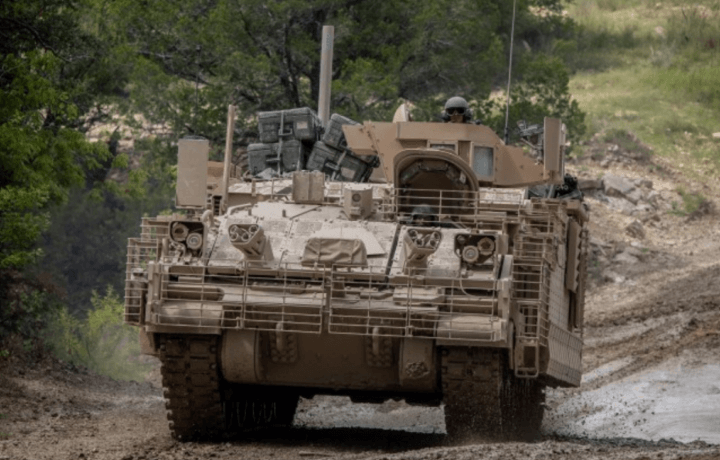York, PA may not spring to mind as a center of U.S. military defense innovation, yet it was actually the temporary base of the Continental Congress from September 1777 to June 1778 and briefly served as the de facto U.S. capital when the Articles of Confederation were drafted.
The tenth-most populous city in Pennsylvania is also home to BAE Systems, which employs approximately 1,600 individuals between its two facilities including at its million-square-foot York Manufacturing Center, where it builds several platforms for the U.S. military. These include the Armored Multi-Purpose Vehicle (AMPV), a family of next-generation, highly survivable vehicles that will replace the Vietnam War-era and legacy M113 armored personnel carriers (APCS).
AMPV Essential to ABCT
The AMPV program has been described as essential to the future of the Armored Brigade Combat Team (ABCT) and the vehicles could fulfill the U.S. Army’s strategy of protection, mobility, reliability, and interoperability. The AMPV will operate alongside the M1 Abrams main battle tank (MBT) and the M2 Bradley infantry fighting vehicle.
The U.S. Army awarded BAE Systems with a full-rate production contract in August 2023 to continue manufacturing the AMPV at a high and sustained rate, and the contractor is ramping up production, aiming to produce around 220 of the vehicles at its York facility. That would be an increase from around one brigade set per year – roughly 130 vehicles – to a brigade-and-a-half or more.
A Modular Platform
At this month’s Eurostatory defense show in Paris, France, BAE Systems also unveiled the latest prototype variant of the AMPV, which was configured with a common top plate, also known as the External Mission Equipment Package (ExMEP). The prototype – which featured Oshkosh Defense’s Medium Caliber Weapon System (MCWS) – further showcased the vehicle’s ability to integrate capabilities and equipment packages internationally. The ExMEP allows the platform to adapt to be fitted with more than 30 different turret systems and builds on the vehicle’s modularity.
“This latest prototype demonstrates the capabilities of a common top plate and the options it provides our allies and NATO partners for rapid integration of next-generation technology onto a proven vehicle,” said Bill Sheehy, AMPV program director for BAE Systems. “The adaptability of the AMPV design means we are able to execute new capability integration quickly and efficiently, further proving the platform’s future-proofed design.”
BAE Systems has touted the universal top plate system as an avenue for rolling out new configurations and previously announced that it had integrated and successfully demonstrated a C-UAS prototype in November 2023, while also integrating and delivering a 120mm unmanned Turreted Mortar capability to the U.S. Army in January 2024. The AMPV NxT prototype was debuted with a 30mm turret at AUSA Global Force in March 2024. All three prototypes employed the common top plate.
“No matter the mission, the AMPV will continue to provide the support troops need in battle for generations to come,” Sheehy said. “We look forward to furthering conversations with our allied nations about how fast and effectively we can adapt the AMPV for any operation or role that’s needed.”
The international defense contractor has also looked toward U.S. allies and partners as potential adopters of the AMPV. Just as it will serve with ABCT alongside the M1 Abrams and M2 Bradley, the AMPV could fill a similar role with NATO members Poland and Romania, which are each adopting the U.S.-made MBT.
Beyond the AMPV
The production lines in York will show no signs of slowing down, even if the AMPV doesn’t find those likely foreign customers.
Last November, the defense contractor was also awarded a nearly $64 million contract modification for the production and delivery of the M109A7 self-propelled howitzers and M992A3 carrier ammunition tracked vehicles, and in April, BAE Systems of York was awarded an additional $25 million firm-fixed-price modification to a previously awarded $181 million contract by the U.S. Marine Corps for more Amphibious Combat Vehicles (ACVs) under the Marine Corps’ fourth order for full-rate production (FRP).
Vehicles produced under the latter contract will fulfill the U.S. Marine Corps’ fleet requirements for ACV-Ps, providing them with full operational amphibious capability to execute operations around the world.




